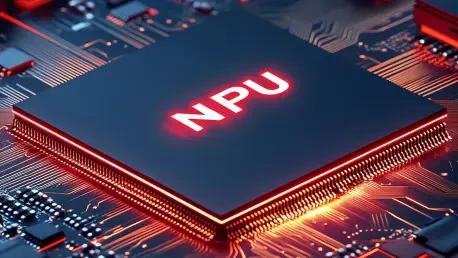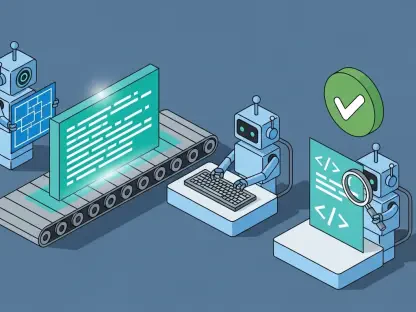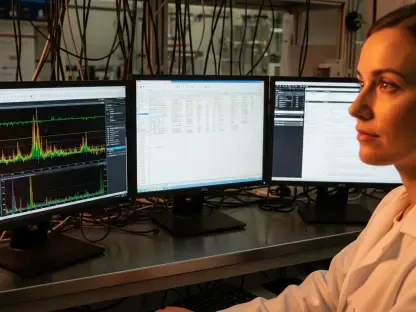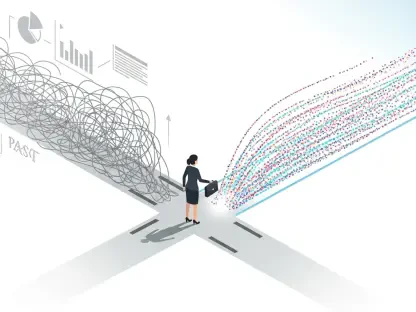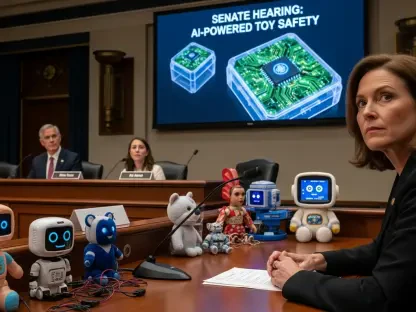In recent years, the surge in demand for more efficient artificial intelligence systems has sparked a transformative shift within the realm of computer vision technology. Previously reliant on the capabilities of Graphics Processing Units (GPUs) to train and process complex AI models, experts now increasingly turn to Neural Processing Units (NPUs) for better performance, especially in edge computing environments. This technological evolution is primarily driven by the limitations observed in traditional GPU architectures, which struggle with the demands of high-resolution, real-time data processing and display inefficiencies when implemented at the network edge. Consequently, NPUs have emerged as the favored alternative, providing specialized hardware solutions that efficiently navigate the intricacies of neural network operations. Their unique ability to manage advanced, multi-modal data processing not only enhances accuracy but also broadens the scope of applications ranging from real-time video analytics to controlling extensive sensor networks.
Breakthroughs in Specialized Processing
The Shift from GPUs to NPUs
Traditional GPUs, though effective for initial AI model training, faced significant challenges when required to perpetually operate at maximum efficiency in edge computing scenarios. As the digital landscape evolves, the pressing need for devices that can accelerate data processing while minimizing latency and energy consumption has become paramount. NPUs are specifically designed to address these challenges by offering enhanced capabilities tailored for neural network algorithms. Unlike GPUs, which often limit themselves to basic functionalities, NPUs excel in high-resolution processing, accommodating complex and varied data inputs without the need for excessive computational resources. Consequently, this shift denotes a broader trend among hardware developers toward the creation of more versatile processors adept at managing the growing complexities of AI-enabled solutions.
In recent collaborations, companies like STMicroelectronics have emerged as trailblazers by prioritizing the integration of NPUs to bolster AI network processing speeds. Such partnerships between chip manufacturers and software developers have been instrumental in realizing this technological transition. By cultivating a cooperative ecosystem, they facilitate the rapid execution of sophisticated AI programs on cutting-edge chips. Collaborative efforts like the partnership between Ultralytics and STMicroelectronics exemplify the synergistic approach adopted to drive scalable AI solutions across diverse industries. Here, the accessibility of AI tools is democratized, enabling businesses of all sizes to not only train but also deploy AI models directly on-premises, thereby igniting innovation and seamlessly weaving AI into everyday business practices.
Real-World Applications and Innovations
The flexible nature of NPUs and their efficiency in handling diverse tasks make them ideal for a range of innovative applications. One key area where NPUs demonstrate considerable potential is in real-time video processing, where their superior capabilities allow for swift and precise analysis of high-resolution streams. This efficacy proves particularly beneficial in fields requiring immediate data interpretation, such as automated surveillance systems and autonomous vehicles. By offering specialized hardware that seamlessly processes visual data, NPUs enable these technologies to react to changes swiftly, ensuring enhanced safety and operational effectiveness. Additionally, their compatibility with extensive sensor arrays opens up numerous possibilities in environmental monitoring and industrial automation, allowing for rapid adaptation and responsiveness to fluctuating conditions.
Another sector experiencing significant transformation due to NPU integration is healthcare. With the mounting volume of medical data produced globally, NPUs provide the necessary speed and accuracy to process and analyze complex medical imaging swiftly. Their ability to perform multi-modal data integration facilitates quicker diagnostics and personalized treatment plans, sparking a new era of proactive medical care. Furthermore, in resource-constrained settings, NPUs stand to play a crucial role by providing cost-effective solutions that allow access to sophisticated AI-based diagnostic tools. By bridging the gap between global technological advances and local healthcare needs, NPUs are poised to revolutionize not only how industries operate but also improve overall quality of life.
The Future of AI Integration at the Edge
Democratizing AI with Accessible Solutions
The emergence of NPUs marks a significant leap toward the democratization of AI technology, characterized by enhanced accessibility and user-friendly implementations. As specialized processors become more mainstream, industries can leverage these advancements to rapidly integrate AI in a manner that emphasizes both efficiency and ease of use. This trend signifies a move toward an embedded AI landscape, encouraging more widespread adoption and making sophisticated AI solutions accessible to a broader audience. Businesses, irrespective of scale or technical expertise, can now harness the full potential of AI, embedding intelligent systems directly into devices to drive innovation and operational efficiency.
The collaborative efforts between technology developers and industry players continue to shape the future of AI, enabling faster, more precise integration across multiple sectors. This cooperative environment fosters a culture of innovation, paving the way for the development of new platforms and solutions that promise to be transformative. By supporting open access to cutting-edge tools and resources, these collaborations empower industries to experiment, innovate, and implement AI solutions autonomously. This democratized approach ultimately ensures that the benefits of AI technologies are widely disseminated, removing barriers and setting the stage for a new epoch of intelligent edge solutions across diverse fields.
Envisioning a New Era in Intelligent Solutions
In recent years, the demand for more efficient artificial intelligence systems has catalyzed a significant shift in computer vision technology. Initially relying on Graphics Processing Units (GPUs) for training and processing complex AI models, experts are increasingly favoring Neural Processing Units (NPUs), particularly in edge computing settings. This change stems from the challenges associated with traditional GPU architectures, which often struggle with high-resolution, real-time data processing and display inefficiencies at the network edge. In contrast, NPUs offer specialized hardware solutions that adeptly manage the complexities of neural network operations. Their capability to handle advanced, multi-modal data processing not only boosts accuracy but extends the applications to include real-time video analytics and management of comprehensive sensor networks. This evolution in processing hardware is reshaping the landscape by providing more efficient, accurate, and diverse computing capabilities in varied environments.
